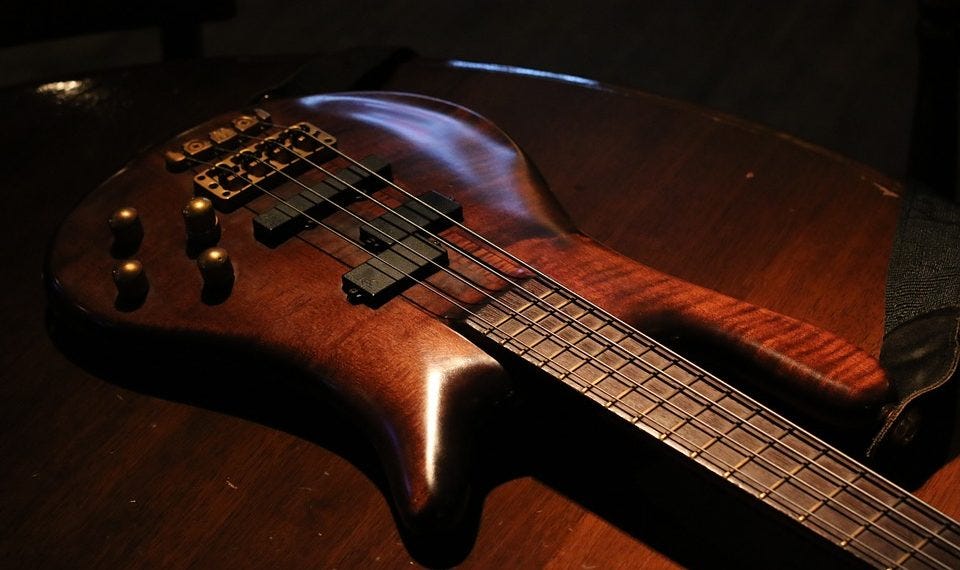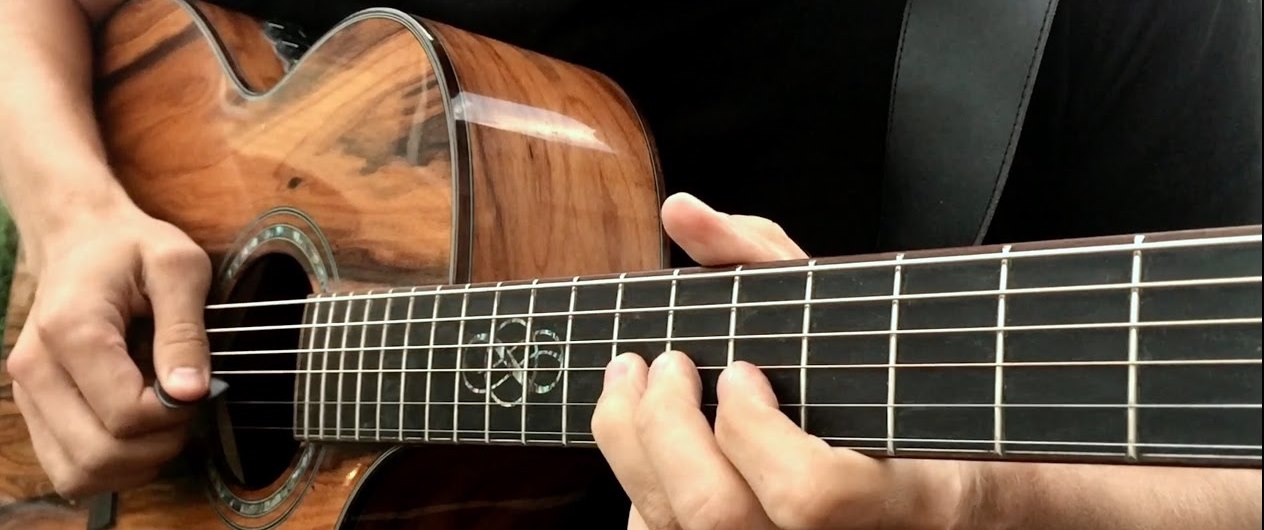Fingertip soreness is temporary and can last a week or more. It doesn’t require treatment, although icing and numbing creams can provide short-term relief. But again, simply playing guitar until you build up some calluses, is the best remedy. Soak a cotton swab in rubbing alcohol and wipe your fingertips with it. Since the rubbing alcohol dehydrates your skin, it dries out your fingers and makes it easier to form calluses while you play. Even Eric Clapton used this trick before he played! Rubbing alcohol may also relieve some of the soreness you feel from playing guitar.
- One Finger Guitar Playing
- Fingers Bruise Easily From Playing Guitar Youtube
- Fingers Bruise Easily From Playing Guitar Online
Learning fingerstyle guitar is difficult – That’s why we’ve assembled these 10 awesome guitar fingerpicking patterns to supercharge your playing!
Over 100,000 guitar-learners get our world-class guitar tips & tutorials sent straight to their inbox: Click here to join them
In this free lesson you will learn…
- 10 guitar fingerpicking patterns
- What syncopation is & why it’s important
- How to fingerpick using all five fingers
- Four-finger fingerpicking patterns
- A new way to approach guitar playing!
Learn To Pick With These Guitar Fingerpicking Patterns!
Welcome to your complete guitar tutorial for guitar fingerpicking patterns!
Whether you are new to the guitar, new to fingerpicking, or bored with the guitar fingerpicking patterns you know, today you’re going to take your playing to a new level.
Strumming the guitar with a pick is powerful and fun, and you can get a lot of sound out of the instrument with a pick.

- Using guitar fingerpicking patterns gives you a very different result with a little more dynamic range and warmth.
- This lesson is going to help you to broaden the range of sounds you can make with the chords you know and love.
Put down your pick and get ready to put a lot more variety into the way you play!
Guitar Fingerpicking Patterns For Absolute Beginners
One of the main purposes of fingerpicking is to accentuate the guitar’s ability to sound like more than one instrument.
With fingerpicking, you can make your guitar into both a rhythm and lead instrument.
- You can make it sound like several guitars, or even like a guitar and bass.
- In most guitar fingerpicking patterns, your thumb has the job of the bass.
- It is in charge of the root of the chord, or the lowest note, and keeps the rhythm steady.
- Your other fingers, whether it’s just two others or all four, are in charge of ornamentation – emphasizing certain notes, and making things sound interesting and pretty.
Guitar Fingerpicking Patterns: The Chords
You can practice the following patterns over any progression you choose, but we’re going to use the same four-chord progression for all of today’s patterns.
This way, you can compare how things sound with the different patterns over the same chords, and you can begin to invent your own fingerpicking rhythms.
It’s necessary and helpful to practice the chord changes beforehand so you don’t have to think too much about your fretting hand while concentrating on your picking hand.
The changes for today’s lesson are from Simon & Garfunkel’s “59th Street Bridge Song,” although it’s a pretty common progression with a nice descending bass line.
C (x32010)
(If you don't understand the above image please read our article 'How To Read Guitar Chordboxes In 60 Seconds'. It will make everything clear!)
G/B ( x20033)
Am7 (x02010)
G (320003)
Learn the 12 EASIEST beginner chords with our famous FREE guide
✓ Stop struggling. Start making music.
✓ Learn 12 beginner-friendly versions of every chord.
✓ This is our most popular guide and it will improve your chord ability quickly.
Guitar Fingerpicking Patterns 1: Basic Three Fingers
For this pattern, your thumb is assigned to the A and low E strings.
Your first (index) finger is assigned to the G string, and your second (middle) finger is assigned to the B string.
Try it first with just the C chord.
- Pick the A string with your thumb, the G string with your first finger, and the B string with your second finger.
- With the G/B chord and the Am7 chord, your thumb will still be picking the A string.
- Your first and second fingers also stay on the same strings.
- The only difference with the G chord is that your thumb will switch strings, picking the low E string.
Here is your first fingerpicking pattern.
Guitar Fingerpicking Patterns 2: Three-Finger Arpeggio
Whenever you’re playing a chord one note at a time instead of strumming the whole thing at once, you’re playing an arpeggio.
All of the guitar fingerpicking patterns shown here use arpeggios.
This variation on the basic three-finger pattern uses the same thumb pattern and changes only what the other two fingers do.
If your thumb is doing its job (playing the root or bass note and holding down the rhythm), you can begin to use your other fingers more creatively.
In other words, the thumb is mandatory and the other fingers are optional.
Try this pattern:
Repetition is key for learning all of these guitar fingerpicking patterns.
Just as we had to repeat chord shapes over and over before our fretting fingers learned to make the shapes, we have to play these sequences over and over to teach our picking fingers the sequences.
Pro-Tip: The more relaxed your picking hand is, the easier it will be to sustain a nice even picking pattern. If you catch your picking hand turning into a tense and uncomfortable claw, take a break and shake it out!
Four-Finger Guitar Fingerpicking Patterns
If you’ve got the basic three-finger guitar fingerpicking patterns down, let’s add the ring finger into the mix.
Your third (ring) finger is going to be assigned to the high E string. All other string assignments stay the same.
Guitar Fingerpicking Patterns 3: Basic Four Fingers
This is a nice basic pattern that you can use to pretty up almost any song you want to play.
It’s a small variation on the three-finger arpeggio you’ve just done. This is a way to introduce a little creativity into your guitar fingerpicking patterns.
Making these small changes can help open you up to finding your own modifications to these patterns and then finding your own style.

It’s a subtle difference, but you can give your song arrangements a little variation by using different guitar fingerpicking patterns in different parts of your songs.
Guitar Fingerpicking Patterns 4: Chiming Arpeggio
There’s no reason that you have to play each chord one note at a time in your guitar fingerpicking patterns.
This one is a little combination of everything you’ve practiced so far, and it has a nice double-stop (two notes at a time) chime at the top.
Practice slowly – the key to the chiming sound is your two fingers hitting the strings at exactly the same time!
Guitar Fingerpicking Patterns in Other Meters
The basic guitar fingerpicking patterns you’ve played so far have been based on two or four beats.
It can be just as easy and intuitive to fingerpick in other meters.
In fact, it feels a bit easier to fingerpick in three or six than it does to strum!
Guitar Fingerpicking Patterns 5: Rainbow Connection
Guitar fingerpicking patterns don’t generally have names, even though some patterns are very commonly used.
This one reminds us of “Rainbow Connection” from The Muppet Movie, so that’s what we call it.
“Rainbow Connection” is a waltz, a song that has three beats to a measure instead of four.
This guitar fingerpicking pattern adapts the chiming arpeggio pattern above to accommodate the change in meter.

It’s a good foundation for any guitar fingerpicking patterns you might come up with when you find yourself in a waltzing musical situation!
Guitar Fingerpicking Patterns 6: The 6/8 Arpeggio
You may be wondering why guitar fingerpicking patterns played in three aren’t the same as those played in six, and of course there’s a long answer for that.
The short answer however, is that the strong beats are in different places.
- A measure of three has one strong beat (the one), and two weak beats.
- With this, we generally count it One Two Three.
- The example above can be counted in 8th notes (One & Two & Three &)
- A measure of six has two strong beats (the one and four), with the rest being weak beats.
- We generally count this One two three Four five six.
To understand the difference, compare this pattern to the one above.
The example below should be counted in six:
Five-Finger Guitar Fingerpicking Patterns
If you are a guitarist who likes to play fingerstyle with your pinky anchored to the body of the guitar, you are not alone!
It’s a good way to keep your picking hand close to the strings so you don’t have to go searching for them all the time.
Anchoring the fourth finger to the guitar is a standard and legitimate way of learning how to fingerpick, but it is not a required element, so let’s get that fourth finger involved in some of these guitar fingerpicking patterns!
These two guitar fingerpicking patterns are going to use the fourth finger (pinky) on the high E string, so let’s stretch out of that comfort zone for just a little bit.
Guitar Fingerpicking Patterns 7: Five-Finger Arpeggio
Your finger-string assignments are going to change slightly for this five-finger arpeggio.
Your thumb string assignment is the same; it will stay on the strings it has been picking.
- Your first finger will be on the D string, second finger on the G string, third finger on the B string, and fourth finger on the high E string.
- You may notice when first trying this pattern that your pinky is a relatively weak picker.
- In the beginning, you might not get quite the same sound as you are with your other fingers. Just listen to that as you practice, and work your fourth finger slightly harder while softening up your attack with the other fingers.
The goal isn’t perfect uniformity, but just a little more evenness.
Download our lead guitar cheat-sheet to make things easier
It can be disorientating for guitarists to understand which scales work with which keys.
With this in mind, we created a cheat-sheet; a key and scale-finder that you can use again and again.
Guitar Fingerpicking Patterns 8: Syncopation!
To give your fourth finger a little more work on the guitar, you can use guitar fingerpicking patterns like this one.
It is a nice combination of lacy fingerwork and a fuller chiming chord, which gives some shape and texture to your arrangement.
Syncopation (when accented beats happen in unexpected places) is a big feature of more advanced guitar fingerpicking patterns.
This is commonly called 3-3-2 syncopation because of how the beats are grouped:
One two three One two three One two.
Give it a try!
Pro-Tip: Get into the habit of not always focusing on your picking hand.
It seems like a good idea when you are starting to make sure your hand is in the right place.
- In the long run, this type of hyper-focus will just slow you down, and when you’re trying to play through a song, you never have time to look down there anyway.
- Teach your fingers to find the strings without looking. You can do it, it just takes time and practice!
Alternating Thumb Patterns
The most popular guitar fingerpicking patterns are those where the thumb bounces between two strings.
This is sometimes referred to as “Travis picking,” named after Merle Travis.
- Travis wrote “16 Tons” and “Dark as a Dungeon”.
- His unique style of fingerpicking was imitative of ragtime style, where the thumb keeps the steady rhythm and the other fingers provide the syncopation.
- He also incorporated elements of the blues in the style of Blind Blake, as well as jazz and western swing.
- Travis has influenced every single guitar player who has come after him, most notably Chet Atkins.
Guitar Fingerpicking Patterns 9: Warm Up To Travis Picking
To get used to the thumb picking between two strings, try this amazingly common and fun pattern.
It’s sometimes called “Thumb One, Thumb Two” because that’s the order in which your fingers pick the strings.
- Your thumb is assigned to the E, A, and D strings.
- In this pattern, your first finger is assigned to the G string, and your second finger is assigned to the B string.
You can find guitar fingerpicking patterns similar to this one in songs like “Landslide” and “Danny’s Song.”
Guitar Fingerpicking Patterns 10: Practicing Travis Picking
This pattern will be familiar to you right away. Everyone from Bob Dylan to Kansas to Pink Floyd to Harry Nilsson uses it!
The unique feature of this Travis pattern is the “pinch” at the beginning. Your finger assignments are the same as in the above pattern.
To get used to this versatile and satisfying pattern, start off with just your thumb on the C chord, bouncing back and forth between the A and D strings.
From there, add the “pinch” with your thumb and second finger.
Anything else that happens in between there is up to you and limited only by your imagination, but for your introduction to genuine Travis picking, try this one!
Where Do I Go From Here?
There is always someone doing something interesting with fingerstyle guitar.
Check out some of these modern guitar gurus:
All of these musicians have incredibly virtuosic and distinctive styles.
The thing to remember is that at one point they were all staring at their hands, wondering how it would ever be possible to make their own music that made them as happy as their guitar idols.
Keep on practicing these guitar fingerpicking patterns! When you’ve got them down, come on back. We’ve got more for you!
Recommended Resources

One Finger Guitar Playing
Here’s some more National Guitar Academy lessons you may enjoy:
What Type of Guitarist Are You?
Take our 60-second quiz & get your results: Take The Quiz
Want free guitar tips and video lessons delivered to your inbox?
Join over 100,000 other guitar learners and subscribe to our guitar-tips-by-email service. (It's free.)
Fingers Bruise Easily From Playing Guitar Youtube
We'll send you a series of lessons that will move you to the next level of your guitar journey.
Fingers Bruise Easily From Playing Guitar Online
Learn how everything fits together quickly, easily and effectively. We share ninja tips (for instant fun!) but also timeless fundamentals that will deepen your understanding.
Popular Lessons
More Cool Guitar Stuff
Learn about the National Guitar Academy: About Us
Visit our YouTube channel for fun guitar videos.
Join us on Facebook for daily guitar tips.
Listen to our Learn Guitar Podcast for rapid guitar progress.
Check out our free chord lessons.